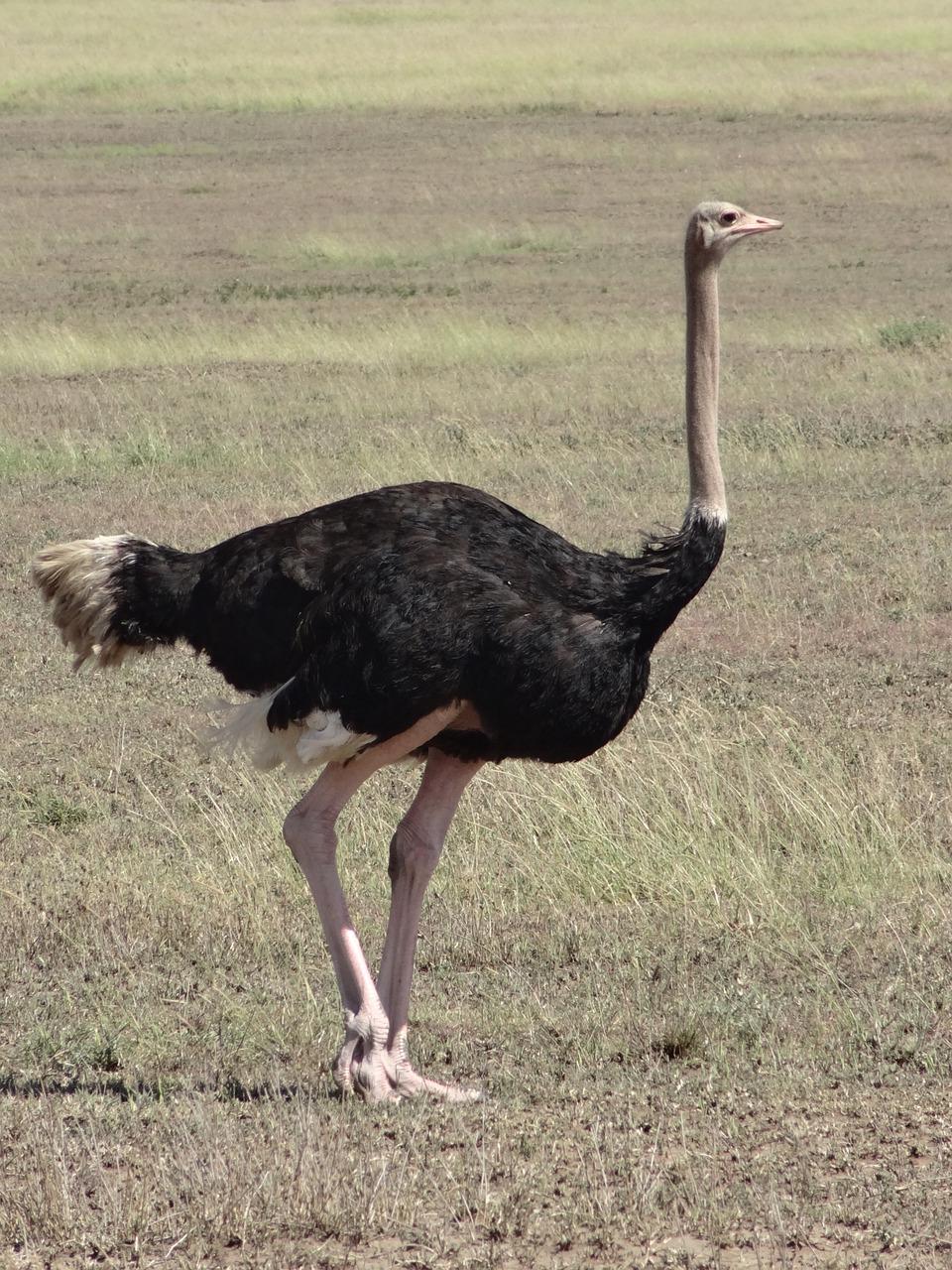How to Survive an Ostrich Attack: Useful Strategies

Whoa there!
Concerned about preventing injury during ostrich attacks?
Wondering if these giant, long-legged birds could really be a threat?
Don't worry, pal, I've got your back. 😎
Let's dive in and learn some survival secrets!
Understanding Ostriches' Defensive Behavior
Ostriches, those huge birds that can't even fly.
You might think they're harmless, but let me tell you something - you better watch out around them.
These birds have some pretty interesting ways to defend themselves, and if you don't want trouble, listen up.
First things first, ostriches are super protective of their nests and eggs.
So, if you're smart, stay the heck away from those breeding spots.
And here's a little tip:
Wild ostriches are way more aggressive than the ones raised on farms.
So, be extra careful when you encounter them in the wild.
Now, when you do come across an ostrich, keep your distance like you would from that oddball cousin at family parties. Don't go picking fights or trying to scare them, no matter how calm they may seem.

Trust me, it's always better to play it safe.
Oh, and here's something cool: most attacks happen during mating season or when they're nesting.
But don't worry, humans aren't exactly their idea of a tasty meal.
They rarely come after us.
To avoid any sticky situations, just give their breeding season some respect.
And by the way, ever heard of ostriches burying their heads in the sand?
Total rubbish.
Don't believe everything you hear.
Alright, folks, that's all for now.
Stay safe out there and remember - don't go pissing off the ostriches.
Heads Up: If you're curious about keeping ostriches, I've got something for you. Check out How to Keep Ostriches for the basics and practical tips. Trust me, you won't want to miss it.
Why Ostrich Attacks Are Dangerous
Ostriches, folks, are absolutely serious business.
These birds are impressive, dangerous, and they mean business.
With those mighty legs, sharp claws, and that super long neck with a beak that seems to stretch forever, ostriches are not something to mess with.
If they decide to attack, they can cause some serious damage.
Now let's chat about their speed for a second, shall we?
Ostriches are the fastest two-legged creatures around.
They can sprint at speeds over 40 mph!
Trying to outrun them is like trying to outrun prime Usain Bolt. It's just not happening.
I don't want to scare ya, but you need to understand the risks involved in ostrich encounters.
Although fatal incidents are rare, you're still flirting with danger here.
Those powerful legs and sharp claws can inflict severe injuries on you.
So, my friend, the smartest thing you can do is steer clear of ostriches, whether they're wild or domesticated.
You never know what tricks they have up their sleeves.
Or should I say feathers?
But hey, accidents do happen, and sometimes you might find yourself face-to-face with an ostrich.
In that case, remain calm (or at least try to).
Being prepared and keeping your cool can help minimize harm during the encounter.
But listen, don't expect to come away without a scratch.
Even if you manage to escape physically unharmed, chances are you'll be scared to death.
I mean, ostriches can reach a height of nine feet, and that alone is enough to give anyone a heart attack.
Oh, and one more thing before I take off.
If you thought ostrich attacks were the only bird-related peril out there, think again.
There have been reports of peacocks chomping on people in the Bronx.
So keep an eye out for those fancy feathers, amigos!
Stay safe out there, and remember, ostriches are no joke.
Seek Protective Cover
To stay safe from a pissed-off ostrich, follow these 10 steps:
- Hide behind stuff like cars, buildings, fences, or anything that can serve as a barrier.
- Keep yourself separate from the ostrich by creating a physical blockade.
- Wait for help to show up before making any moves.
- If you can find a tree, climb it for temporary safety.
- Scope out places with thick vegetation where you can hide your terrified self.
- Never confront the ostrich head-on—their legs are a major danger.
- When no cover is around, think about playing dead or using a stick to defend yourself.
- Bear in mind that ostriches are lightning fast—reaching speeds of up to 72 km/h (43 mph)—so be cautious as hell.
- Ostriches usually avoid thornbushes, but be careful because those prickly plants might still be hanging around.
- Approach an ostrich from the side to minimize the chances of getting walloped by their strong legs or stabbed by their sharp claws. 😨
Now, you might be wondering how to effectively defend yourself against an ostrich when elusive cover is out of reach.

Well, there's good news...
I have some powerful strategies that will ensure your safety and give you the upper hand in this high-stakes encounter.
Defending Against Ostriches: Strategic Use of Long Weapons
| Weapon | Description |
|---|---|
| Stick or pole | Use a long weapon to maintain distance from the ostrich |
| Body strikes | Deliver firm strikes to deter the bird from attacking |
| Continuous strikes | Carry out strikes until the ostrich retreats |
| Aim for vulnerable areas | Target the ostrich's neck or legs for maximum effectiveness |
| Stay calm and composed | Remaining calm can help prevent further aggression from the bird |
| Avoid sudden movements | Sudden movements can provoke the ostrich and escalate the situation |
| Retreat slowly | If the ostrich shows signs of aggression, back away gradually |
| Seek immediate cover | Find a safe spot to protect yourself from the ostrich's attack |
| Stay aware of surroundings | Be mindful of the ostrich's movements and potential escape routes |
Utilizing long weapons is crucial for ensuring your safety when defending yourself from an ostrich attack.
And we're not talking about flimsy twigs here.
We need something sturdy and substantial to tackle these massive creatures head-on.
Since ostriches are known for their size and strength, you want a heavy stick, a pole, or a solid branch in your hands.
With this, you can create a safe distance between you and the ostrich while delivering powerful strikes to discourage any potential attack.
Now, brace yourself for this golden rule when facing off with an ostrich:
Always position yourself to the side or behind.
Why?
Because ostriches can only kick forward with their legs.
By smartly maneuvering yourself out of the line of fire, those deadly legs won't be able to reach you.
After you've armed yourself with a long weapon and secured a strategic location, it's time to go on the offensive.
Take that stick, pole, or branch and deliver continuous strikes until the ostrich finally understands and backs off.
Don't hold back - fight with unwavering determination.

For those brave souls contemplating using a gun, keep this little trick in mind:
Aim for the ostrich's main body.
Their legs and neck are thin and easy to miss, so train your focus on the most effective target and shoot away!
But hey, if you don't happen to have a fancy stick or a gun lying around, don't fret.
Get imaginative.
Grab anything long and strong, like a rake, broom, or even another trusty branch.
The objective remains the same: keep that ostrich at bay and far away from its perilous legs.
Ultimately, defense is the name of the game here.
So stay calm, arm yourself with a long weapon, and always make sure that you maintain a safe distance from the ostrich.
Stay safe out there!
But what do you do when you're faced with an ostrich and don't have access to a long weapon?
Well, don't worry because I have some unconventional techniques in store for you!
In the next section, I'll reveal how you can immobilize an ostrich temporarily and even consider using a sleeper hold.
Trust me, these strategies should not be taken lightly, but they just might give you the upper hand in a dire situation.
Stay tuned, because this is information you won't want to miss!
Immobilizing the Ostrich: Techniques and Strategies
Techniques for immobilizing an ostrich
Alright, folks, let's talk about immobilizing an ostrich.
If you find yourself in a situation where you need to do this (for whatever reason, no judgment), follow these strategies carefully.
Your safety is the top priority here!
Grabbing the neck and seeking assistance
Imagine this scenario:
You need to immobilize an ostrich. If it's your only option and you're physically capable, try grabbing its vulnerable neck.
Ostriches are big and can be feisty, so don't attempt this alone!
Call for help from nearby people to ensure everyone's safety, including yours.
Breaking the neck and self-defense tactics
Now, picture confronting an ostrich face to face.
In case of self-defense, targeting the ostrich's neck can be effective.
Twisting its neck might temporarily immobilize the unruly creature. But keep safety in mind, both for you and the ostrich.
If everything else fails and you end up wrestling, aim for the ostrich's eyes, head, or legs if needed. Remember, the neck is the weakest spot, so make it your primary target.
And who knows?
You might just become a hero by defeating an ostrich in a wrestling match.
Surviving an Aggressive Ostrich: Playing Dead
When an aggressive ostrich confronts you, playing dead is a smart move.
Instead of running away or standing up, lying down or lowering yourself close to the ground is what's recommended.
By not showing any threat or movement, you demonstrate to the ostrich that you are no danger.
Shielding your head and neck with your hands and arms while playing dead gives you extra protection.
Once the ostrich loses interest, you can safely carry on with your activities without harm.
Outwitting Ostriches: Key Takeaways for Survival
Key Takeaways:
- Wild ostriches are more aggressive, so it's best to avoid them.
- Back away if approached by an ostrich, even if non-aggressive.
- Ostriches attack when threatened during mating or nesting.
- Ostriches are fast and have powerful legs and sharp talons.
- Stay far away from wild and domesticated ostriches.
- Seek cover behind a car, building, fence, or climb a tree.
- Avoid directly facing an ostrich and approach from the side.
- Use a long and heavy stick or pole as a weapon.
- Aim for the ostrich's neck, weakest body part.
- Playing dead can be effective protection if confronted by an ostrich.
And that's all for today folks.
Before you leave, can I ask you something? Was my blog post helpful for you? If it was, I would really appreciate it if you could share it with your friends and family. Simply click on any of the social media sharing icons to instantly spread the word. Thank you so much!
Until next time,
-Caleb Parker